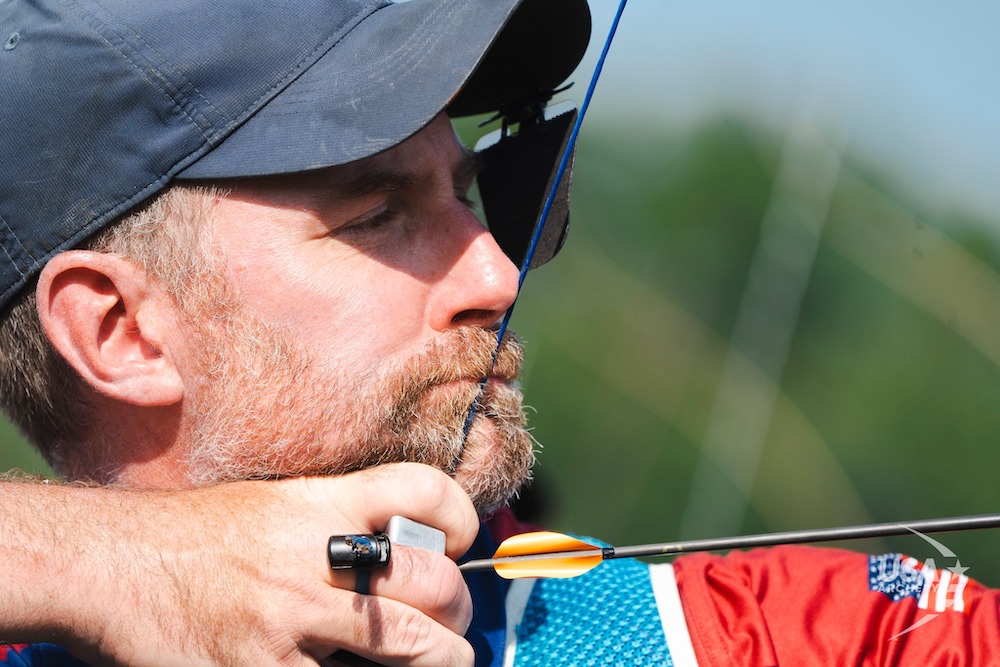Are you left-handed or right? Hand preference becomes a part of one’s identity starting from a young age. It’s a topic of conversation in early childhood when parents begin giving their toddlers washable markers and observing which hand they use to scribble. A child’s hand preference starts to take shape around the ages of 2 to 4. Kids use their dominant hand to draw, throw balls, hold forks and even shoot a bow. However, there are some situations where hand dominance doesn’t correspond with the hand an archer uses to draw.
What Is a Dominant Eye?
There are fewer conversations about eye dominance than hand dominance. Many people don’t even realize they have a dominant eye, and so it goes undetected. But for archers, the relationship between eye and hand dominance plays an important role in the sport.
A person’s dominant eye is the one that most accurately relays information to the visual part of the brain. This doesn’t always mean it’s the eye with better vision. But it’s commonly the preferred eye and one that performs more functions. For most people, the eyes work together as a team. In certain activities, though, knowing which eye is dominant becomes important. Photographers take better shots with their dominant eye. When you’re playing sports, the dominant eye focuses more accurately on the target. This is why understanding eye dominance is essential for archers.
Finding Your Dominant Eye
It’s easy to figure out which of your eyes is dominant. Just follow these steps:
- Choose a distant object.
- Make a thumbs-up with either hand.
- With both eyes open, place your thumb over the distant object.
- Keeping your thumb still, close your right eye and observe the result.
- Then, open the right eye and close your left eye while keeping your thumb still.
- One of two things will happen as you close each eye in turn: Your thumb will either continue to cover the object or seemingly jump to one side.
- Identify which open eye keeps your thumb covering the object. That’s your dominant eye.
- Likewise, if your thumb moves off the object, that eye is not your dominant eye.
What Is Cross-Dominance?
Studies reveal there’s a strong correlation between an individual’s eye and hand dominance. This means that most people who are right-handed are right-eye dominant. Cross-dominance occurs when a person’s dominant eye differs from their dominant hand. A right-handed individual would have a dominant left eye and vice versa. One study showed that 74% of individuals have the same dominant eye and hand, while 26% are cross-dominant.
Eye and Hand Dominance in Archery
Understanding eye dominance is critical among archers. Ideally, an archer would aim with their dominant eye because it best relays the location of the target. This means you will likely shoot your best while using your dominant eye. If you’re among the nearly 75% of the population with the same dominant eye and hand, choosing a bow is simple. Most right-handed people should choose a right-handed bow because you draw it with your right hand and aim it with your right eye.
However, if you’re part of the approximately 25% of people who are cross-dominant, choosing a setup is more complicated. Some archers find it preferable to aim with their dominant eye, which means training their nondominant hand to draw the bow. Others prefer to shoot with their dominant hand and train their nondominant eye to focus on the target.
There’s much to consider when making a decision about whether to shoot left- or right-handed. For some, it’s a question of what feels most comfortable. Some archers might have spent years shooting one way and don’t want to make the switch. Some archers are forced to switch because of injuries. Other times, archers are playing other sports, too, and wish to remain consistent.
Training Your Nondominant Hand

Learning to aim with your dominant eye while drawing with your nondominant hand takes time and practice. To adjust to this transition, archery coaches suggest practicing other activities with your nondominant hand. Try writing, opening doors, throwing a ball and brushing your teeth. These activities will feel awkward at first, but practice will ultimately improve your dexterity. Practice and repetition will build strength and improve form.
Training Your Nondominant Eye
If you decide to use a bow designed for your dominant hand, it’s important to train your nondominant eye to focus on the target. Cross-dominant archers who choose to use their nondominant eye risk having the dominant eye take over. For most archers, shutting the dominant eye is enough. However, sometimes the urge to peek is too powerful. Archery coaches advise wearing an eye patch. It might feel a little piratelike at first, but it prevents the dominant eye from taking over. Other options include using blinders on the side of the sight house.
Right vs. Left: Shoot What’s Best for You
Sometimes archers are forced to switch after injuries. Darrin Christenberry, an Elite pro shooter, switched from right to left after two decades of competitive shooting. He nearly quit as a result of injuries but instead trained as a left-handed archer. Not only was he able to make the switch successfully, but he’s back atop the podium. He recently won the third leg of the IBO Triple Crown in Nelsonville, Ohio.
If you’re considering switching hands or are cross-dominant, visit an archery shop to shoot both options. With practice, archers can shoot whatever way works best for them.



